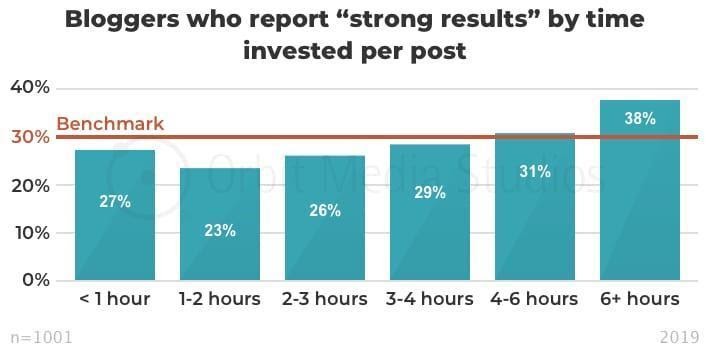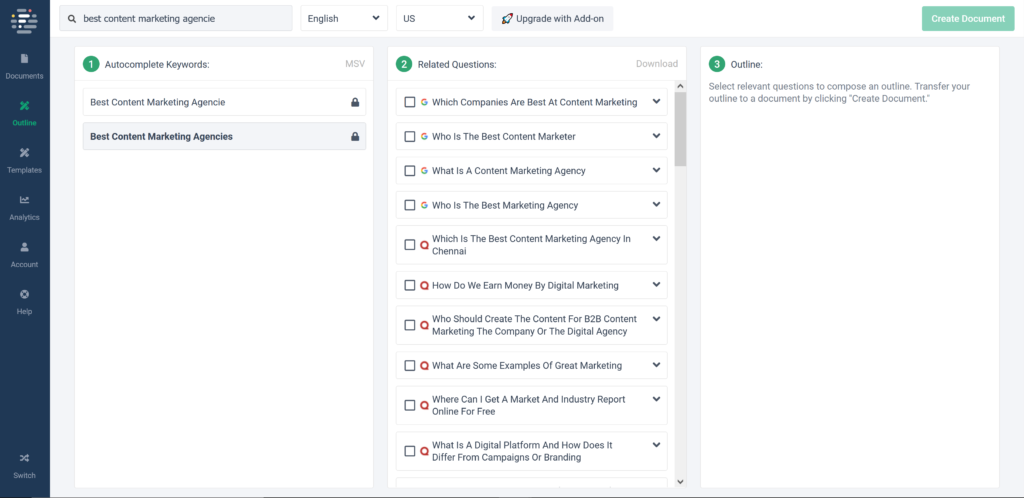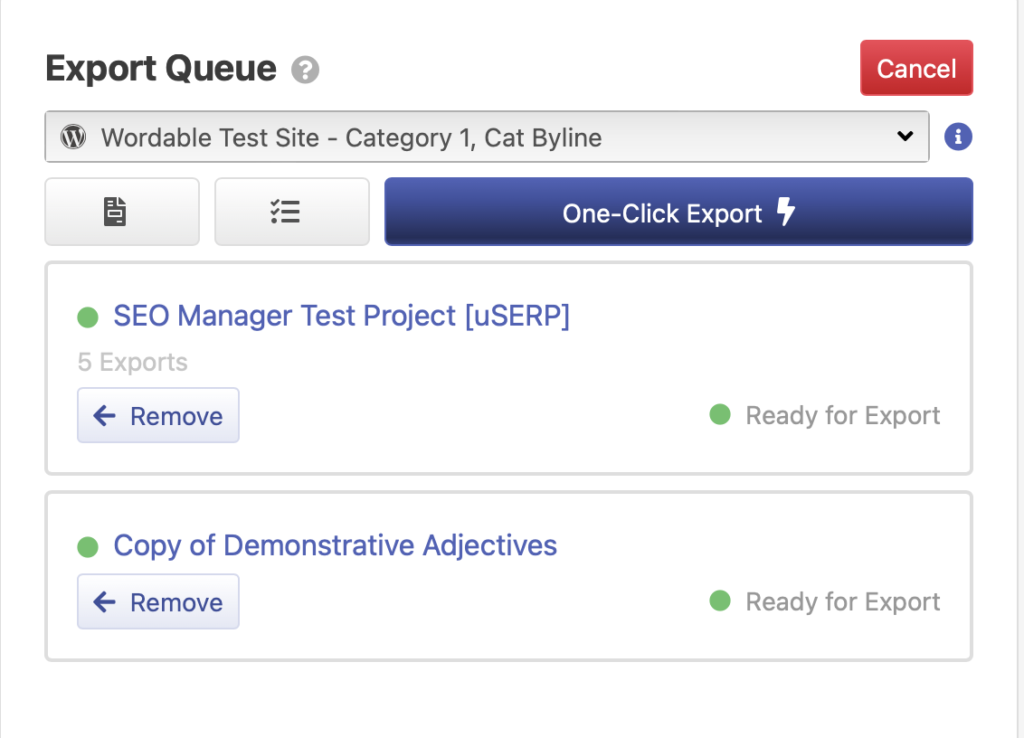Creating content is tedious.
30% of bloggers spend more than six hours per post, hoping to see good results from the content they publish.

That’s almost a full workday of research, writing, and editing to get it right.
And, once in a while, you’ll create and publish a masterpiece that delivers the results you’re looking for.
But how consistently are you able to do that?
Other B2B brands are posting great content every few days and that baffles you. How do they manage to do it without breaking a sweat?
That’s where an optimized content workflow comes in.
In this post, we’ll cover three elements of an optimized content creation process which will improve what you already have so you start creating and publishing great content consistently.
Scale insightful marketing content across the web.
We help you grow through expertise, strategy, and the best content on the web.
Before we go any further, let’s understand what an optimized content creation process is and why it matters…
What is an Optimized Content Creation Process?
An optimized content creation process is a system that helps you create relevant and engaging content for your target audience, consistently.
Think of it as a standard operating procedure that you use every time you need to create content that delivers on your business objectives. No more winging it then checking Google Analytics several times a day hoping that you’ve hit a homerun.
But that’s not all…
Getting more traffic and generating qualified leads are some of the biggest challenges companies face today. That explains why 70% of companies have a content marketing budget to help them overcome these challenges. And you’d be right in thinking that content creation is taking a significant amount of this budget.
The result? More competition as content marketers try to outdo each other by publishing in-depth content frequently to boost their odds of ranking on Google to get more organic traffic.
And without an optimized process to help you create and publish relevant and engaging content consistently, you’re going to have a hard time achieving the goals you set in your content strategy framework. But we both know that’s not what you want, right?
Here are three elements you need to optimize within your content creation process:
1: A Content Creation Model
Before any type of content goes live, there’s a lot that happens behind the scenes. If you’re publishing a blog post, for instance, you’ll work with a writer, an editor, and a graphic designer. You’ll also need tools to help automate some parts of the content creation process such as editing, publishing, or even generating visuals with an AI art generator.
Automation is essential for your blog and social media. When it comes to social media platforms such as X, AI-powered tools like an AI tweet generator can be integrated to automatically craft and schedule tweets, extending your content’s reach with minimal effort and contributing to your lead generation efforts.
A content creation model helps you identify what you need early enough to help you determine if you have the capacity to meet your content needs consistently without unnecessary delays.
The content creation model you’re going to use will determine your speed, efficiency, and the quality of content you’ll publish.
There are three models to choose from:
- In house content creation model: You have a team that takes care of content creation
- Outsourced content creation model: You work with freelancers or agencies to create content
- Hybrid content creation model: You use both models to create content. This way you can leverage in house writers, freelancers and even AI writing software to improve the speed and quality of your content creation processes.
Here’s how to identify the model that works for you:
Step 1: Evaluate your content needs: How much content do you need to produce? How often do you need to produce each content type? That includes every content format you need: text, audio, visual, and video.
Do you have the time, money, and people required to produce it? Also, remember to do a content audit to know whether you need to revamp your existing content.
Step 2: Identify the level of expertise your content needs to have: You’re going to publish content for an audience in different stages of the buyer’s journey. You’ll need content with different levels of expertise for each buyer persona. Do you have subject matter experts to create content with relevant expertise levels for your target audience?
Step 3: Identify areas you need to automate: Some stages in your content creation processes take a lot of valuable time that you could use working on other time-intensive tasks. Here are a couple of stages you may want to automate, and possibly giving you more ideas on other stages you should automate to save time:
- Creating content briefs
- Editing
- Exporting content to WordPress for publishing
These steps should help you identify the model that works for you so that you’re in a position to meet your content needs without unnecessary delays.
For example, if you don’t have subject matter experts for written content, then you’ll want to go for the hybrid model and work with a content writing agency to help you fill in that gap.
Having identified your content creation model, it’s time to create a writing workflow that integrates with your model.
2: A Content Creation Workflow
From your content marketing strategy framework, you already have content types and their goals each type is supposed to help you achieve. A writing workflow helps you make the content creation process efficient.
Depending on your company setup, you’ll have the following people involved in your writing workflow:
- Content strategist: Create your editorial calendar and assign topics to writers
- Writers: They research, write, and self-edit content before submitting to editors
- Graphic designers: Create custom images for blog posts and other types of visual content
- Editors: They review each content piece from writers and will either pass it on to the content manager for approval or return to the writer for more edits.
- Content marketing manager: Approves content for publishing.
Given their different roles in the content creation process, you want to avoid unnecessary friction in your content creation process.
Use a collaboration tool like Pipefy for each step to make sure each one comes in when they are supposed to:

Pipefy helps you do this and you can add any step in your writing workflow with instructions on who is in charge of each step. This way, confusion is reduced and unnecessary delays are also eliminated.
To get rid of delays, work from your goal backward. Say, for instance, you want to publish three blog posts per week. That means you need to have topics for a whole month or two prepared in advance.
If you already have your topics, identify the day each blog post should go live then work backward, allocating time to each step of the creation process.
Other essential content creation tools
Depending on the amount of time it takes from research to publishing, here are a few content creation tools to help you save time by automating repetitive tasks:
#1. Frase
You want to have clear expectations of what you expect from a writer in each piece of content. A common approach when creating briefs involves doing a manual SERP analysis to identify search intent, related topics, and analyze content that’s ranking for the topic you want to write about.
It takes time while in some instances, you might not get all the information you’re looking for.
For example our topic “Content marketing agencies” does not have a “people also ask” section in Google’s search engine results.
On the other hand, Frase has a Keyword Discovery feature that provides users with the relatable terms people are searching on the web to help me (as the writer) to determine search intent:

You want to reduce that time and get more done with less by using an AI tool that automates the process and helps you collect all the information you need to help writers create effective content.
#2. Hemingway app and Grammarly:
These two come in handy to help writers self edit, before sending in work to editors. They catch common mistakes in their work, therefore reducing the back and forth editing process.
#3. Google Docs:
While this is a common tool used by most content teams, using different document URLs leads to unnecessary delays and confusion.
A writer might have their own folder and doesn’t open all documents for editing. Once they send in their work for editing, the editor won’t access it.
To prevent this from happening, create a folder inside Google drive, create blank documents, and share the URLs with all your content team so everyone has access to the document.
#4. Wordable:
Copying and pasting from Google Docs to WordPress is a pain because you also have to redo the formatting, add links and images, and more — all of which increases the likelihood of making mistakes in your draft.
Wordable makes the whole process easier by automating the export process, reducing the chances of errors in the final copy and saving time in the process.
Publish Google Docs to your blog in 1-click
✅ Export in seconds (not hours)
✅ Less VAs, interns, employees
✅ Save 6-100+ hours/week

3: Tracking Your Progress
When optimizing your content creation process, getting everything right won’t be easy.
As you identify mistakes and correct them, you will publish content faster without compromising on quality.
Here are a few pointers to help you evaluate your progress:
1. Are you publishing on schedule as indicated in your content calendar?
If you’re aren’t, then identify the issue and address it.
It could be a delay in the writing process or too much work for one writer. If there’s a delay in the writing process, clarify what everyone needs to do before handing over a blog post to the next person in your content creation process.
If your writers have more work than they can handle, consider hiring new writers or outsource content to freelancers. Hiring new writers or outsourcing content to freelancers are effective strategies to manage overflow. However, complementing this with the recruitment of a hire a graphic designer can significantly enhance the overall quality of your content. A graphic designer proficient in creating engaging visuals, infographics, and other graphical elements can elevate the appeal and effectiveness of your content.
Another way to streamline your content process and ensure it gets published on time is by leveraging an AI tweet generator. AI-powered tools can instantly turn your blog posts into engaging Twitter threads, saving you time and ensuring your content reaches a broader audience. By automating tweet creation, you can maintain a consistent posting schedule without the hassle of manually drafting each tweet.
2. Are you meeting your quality guidelines?
If your writers aren’t following the brand guidelines you have provided, then the tone and style in your content will be inconsistent meaning you might not get the results you are looking for.
To address this, check in with writers and everyone involved to ensure they have a copy of your brand guidelines and whether they understand them. Clarify any issues they have.
Compare the results you are getting with the blog KPIs you’ve set. Are you moving closer to the goals you set in your content strategy?
Pay attention to your engagement rates and how well your audience is taking up the different offers you present in your content.
A low engagement rate by readers means you need to make your content easier to consume.
Consider adding custom images, writing better headlines and subheadlines, and improving your introductions and the general flow of content.
If your website visitors aren’t converting, present relevant lead magnets and use CTAs with action-oriented copy to incentivize readers to submit lead information.
Conclusion
Your potential buyers don’t care how good your product is if you can’t show up during their buying journey to answer their questions through content.
And it’s impossible to produce high-quality content consistently while you’re not looking for ways to tighten loose ends in your content creation process.
On the contrary, it is having a content creation model, a writing workflow, and tracking your progress that helps you create content at scale without compromising on its quality.
And it’s no coincidence that B2B marketers that are continually optimizing their content creation process are building bigger audiences and getting more customers in the process.
So, look back at your content creation process and identify the loose ends that you need to tighten.
You’ll notice that content creation will be efficient and one day, you’ll look at your analytics and see yourself hitting your KPIs.
Isn’t that what you’d want for your brand?



